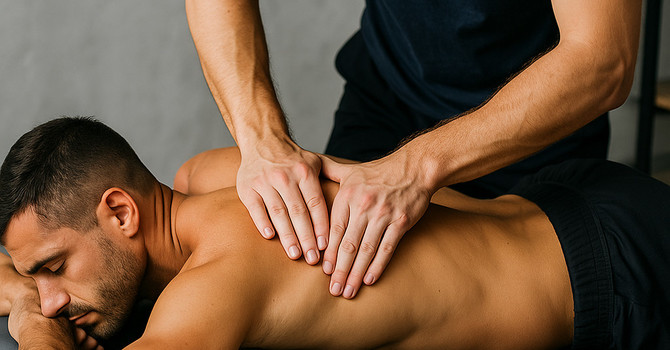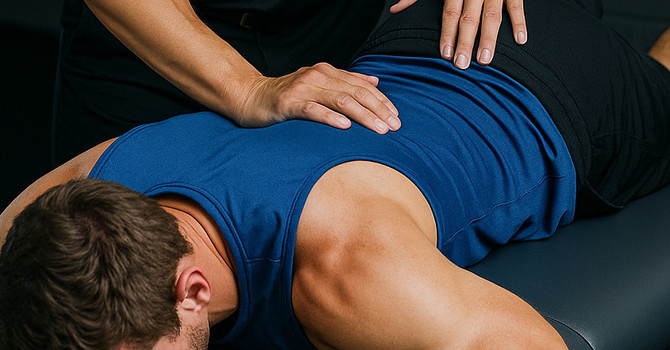Shoulder pain is a common issue that can significantly disrupt daily life, making simple tasks like lifting, carrying, and reaching challenging. Due to its high mobility, the shoulder joint is especially vulnerable to injury and strain. Maintaining shoulder health is vital, as the joint is essential for most upper body movements. The earlier shoulder pain is addressed, the sooner treatment can begin, reducing the risk of it worsening over time.
Understanding Shoulder Pain and Injuries
Be aware of "red flags" that may indicate common shoulder conditions. If you experience persistent discomfort, stiffness, or pain that limits your range of motion, it could be due to conditions like a rotator cuff injury, sprains and strains, frozen shoulder, arthritis, or bursitis. However, with proper rehabilitation, many of these issues can be managed, helping to restore shoulder function and reduce discomfort.
The Rehabilitation Process
1. Patient Education
In this phase, we provide clear instructions on how you can actively participate in your recovery.
For example:
- Self-Monitoring: We teach you how to recognize signs of overuse, such as pain that lasts more than four hours, swelling, or a decrease in strength.
- Biomechanical Awareness: We show you proper posture and alignment when performing daily tasks like lifting or carrying, ensuring that you reduce unnecessary strain on your shoulder.
- Exercise Demonstrations: We demonstrate and guide you through proper techniques for each exercise, ensuring you understand how to execute movements safely at home.
2. Considerations for Progression of Exercises
Here, we focus on gradually advancing your exercises based on your recovery progress.
For example:
- Restoring Range of Motion: If joint mobility is limited, we may begin with gentle joint mobilization techniques to restore joint play and flexibility.
- Isometric Strengthening: When you still have limited range of motion, we may introduce isometric exercises like shoulder presses against the wall, which can build strength without excessive joint movement.
- Progressive Resistance: As your mobility increases, we incorporate light resistance bands to safely challenge the muscles involved in shoulder movement.
3. Progression of Stretching
In this phase, we gradually increase the intensity and duration of stretching.
For example:
- Passive Stretching: We begin with passive stretching techniques where we help move your arm through its range of motion to gently stretch tight muscles.
- PNF Stretching: We introduce Proprioceptive Neuromuscular Facilitation (PNF) techniques, where you alternate between contracting and relaxing muscles while being stretched, to improve flexibility.
- Self-Stretching Instruction: We provide you with detailed self-stretching routines you can do at home, such as reaching across your body or using a towel to stretch your shoulder behind your back.
4. Progression of Exercises for Muscle Performance: Developing Neuromuscular Control, Strength, and Endurance
As your shoulder improves, we focus on muscle performance and coordination.
For example:
- Neuromuscular Control: Early exercises may include unidirectional motions, like simple arm raises, to help you regain awareness and control of specific muscles.
- Strength Training: Once you gain control, we introduce dynamic resistance exercises like lateral raises or rows using resistance bands or light weights to improve shoulder strength.
- Endurance: We incorporate exercises that build endurance, such as repeated low-intensity shoulder lifts or bodyweight exercises, to prevent muscle fatigue during daily activities.
5. Return to High-Demand Activities
When you're ready to return to more physically demanding tasks, we prepare you through more intense and specific drills.
For example:
- Sport-Specific Drills: For an athlete, we design plyometric exercises, such as medicine ball throws or overhead slams, to mimic the fast, dynamic motions required in sports.
- Work-Specific Simulations: For someone returning to a labor-intensive job, we replicate lifting and carrying tasks, progressively increasing weights and adding unpredictability to ensure safe, real-world application.
- Plyometrics and Agility: We use exercises like box jumps or ladder drills to improve agility and coordination, ensuring you can handle sudden movements safely in both work and sports environments.
Personalized Rehabilitation for Optimal Shoulder Health
At HealthyToDos Markham Health and Rehab Clinic, we offer a comprehensive, chiropractor-supervised rehabilitation program. We work closely with you to adjust your treatment plan as needed to ensure optimal recovery. Book an appointment with our Chiropractor, Dr. David Tam today to reduce pain, prevent future issues, and return to your daily activities.
References (APA)
Kisner, C., & Colby, L. (Eds.). (2013). Therapeutic Exercise: Foundations and Techniques. F. A.
Davis Company
Magee, D. J. (2002). Orthopedic physical assessment. Philadelphia: Saunder

HealthyToDos Inc.
Contact Me


